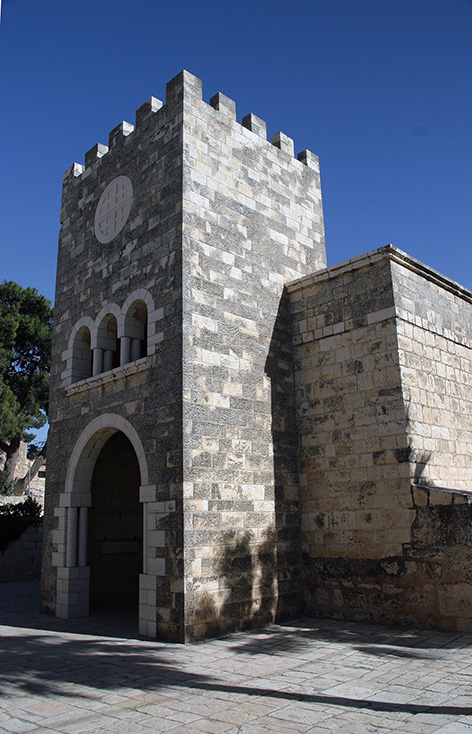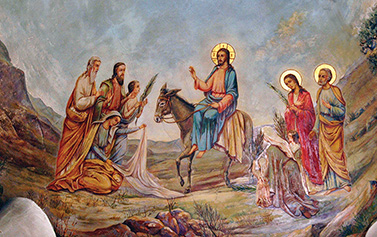
JESUS GETS ON A DONKEY AT BETHPAGE
MATTHEW 21:1–7
The Gospel writers document the travels of Jesus that literally crisscrossed hundreds of miles, yet only once do we specifically hear about him riding on a donkey. A week before Passover he got on a donkey at Bethpage, the city limits of Jerusalem. This unique act set in motion the events Jesus encountered during Passover week.
Two of Jesus’s disciples were assigned the task to go ahead into the village of Bethpage and obtain a donkey. Jesus told them, “Go to the village ahead of you, and at once you will find a donkey tied there, with her colt by her. Untie them and bring them to me” (Matt. 21:2). Of course Jesus knew that this was going to cause a commotion, so he told the men how to respond to the objections that would arise. “If anyone says anything to you, tell him that the Lord needs them, and he will send them right away” (Matt. 21:3).
For those familiar with the topography of this area, the next detail of this event is unexpected. Jesus had left Bethany and walked up a very steep hill for about twenty minutes before arriving in the vicinity of Bethpage. By that point he was close to starting the downhill portion of his journey. If Jesus were going to ride at all, then one might expect him to ride uphill and walk downhill rather than the other way around. Thus Jesus’s action of getting on a donkey at Bethpage invites us to look for an explanation.

The church at Bethpage, built in remembrance of the site where Jesus mounted the donkey for his triumphal entry into Jerusalem.

Jesus sent the disciples to find a donkey with its colt tied next to a house at Bethpage.

The Mount of Olives, Bethpage, and Bethany (aerial view looking northeast).
Why did Jesus get on the donkey at Bethpage? The Gospel writers provide our answer. A large crowd of Passover visitors heard Jesus had left Bethany and was on his way to Jerusalem, so they went to meet him. Many of those gathered had either witnessed or heard of Jesus raising Lazarus from the dead and were anxious to proclaim him King as he entered Jerusalem (John 12:12–19). When he arrived at the city limits, he got on a donkey in fulfillment of a prophecy made hundreds of years earlier by the prophet Zechariah. Speaking “the word of the LORD Almighty” (Zech. 8:18), Zechariah helped a subsequent generation of readers identify the Messiah when he came. Matthew states that Jesus entered Jerusalem riding on the back of a donkey in fulfillment of Zechariah’s prophecy: “Rejoice greatly, O Daughter of Zion! Shout, daughter of Jerusalem! See, your king comes to you, righteous and having salvation, gentle and riding on a donkey, on a colt, the foal of a donkey” (Zech. 9:9; see also Matt. 21:4).
That is where Bethpage comes in.4 According to Jewish literature, Bethpage was considered the city limits of Jerusalem. For example, according to the Mishnah, bread prepared for use in the Temple was considered to have been made in the city of Jerusalem if it were made in Bethpage.5 So if Jesus was going to enter Jerusalem riding on a donkey and identify himself as the King of Zechariah’s prophecy, he had to get on that animal at the city limits of Jerusalem. When he did so, the crowds thronging to meet Jesus got the message, and from that time on this event has marked the beginning of Jesus’s triumphal entry into Jerusalem.

Painting of the triumphal entry in the Russian Church of the Ascension.